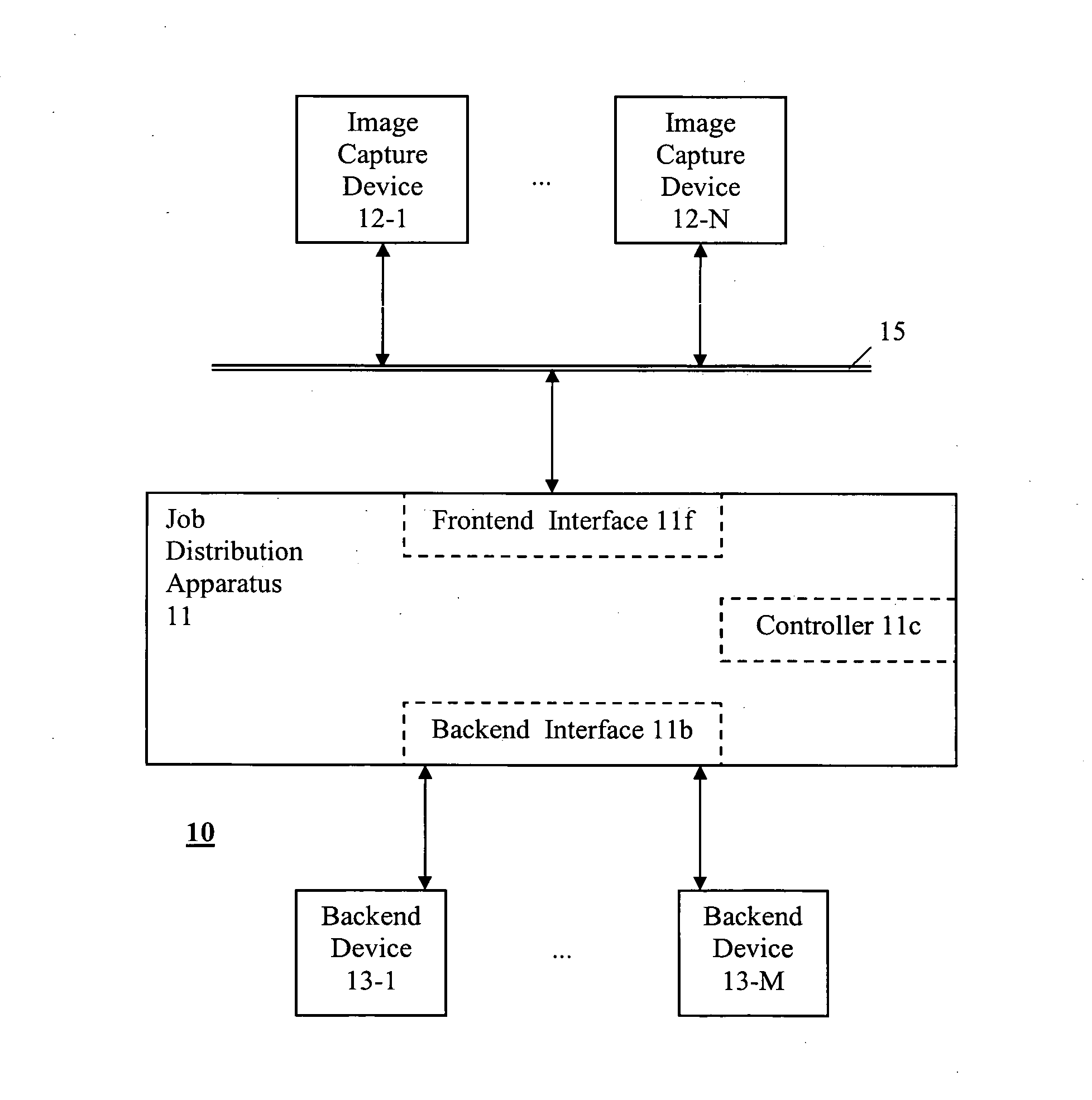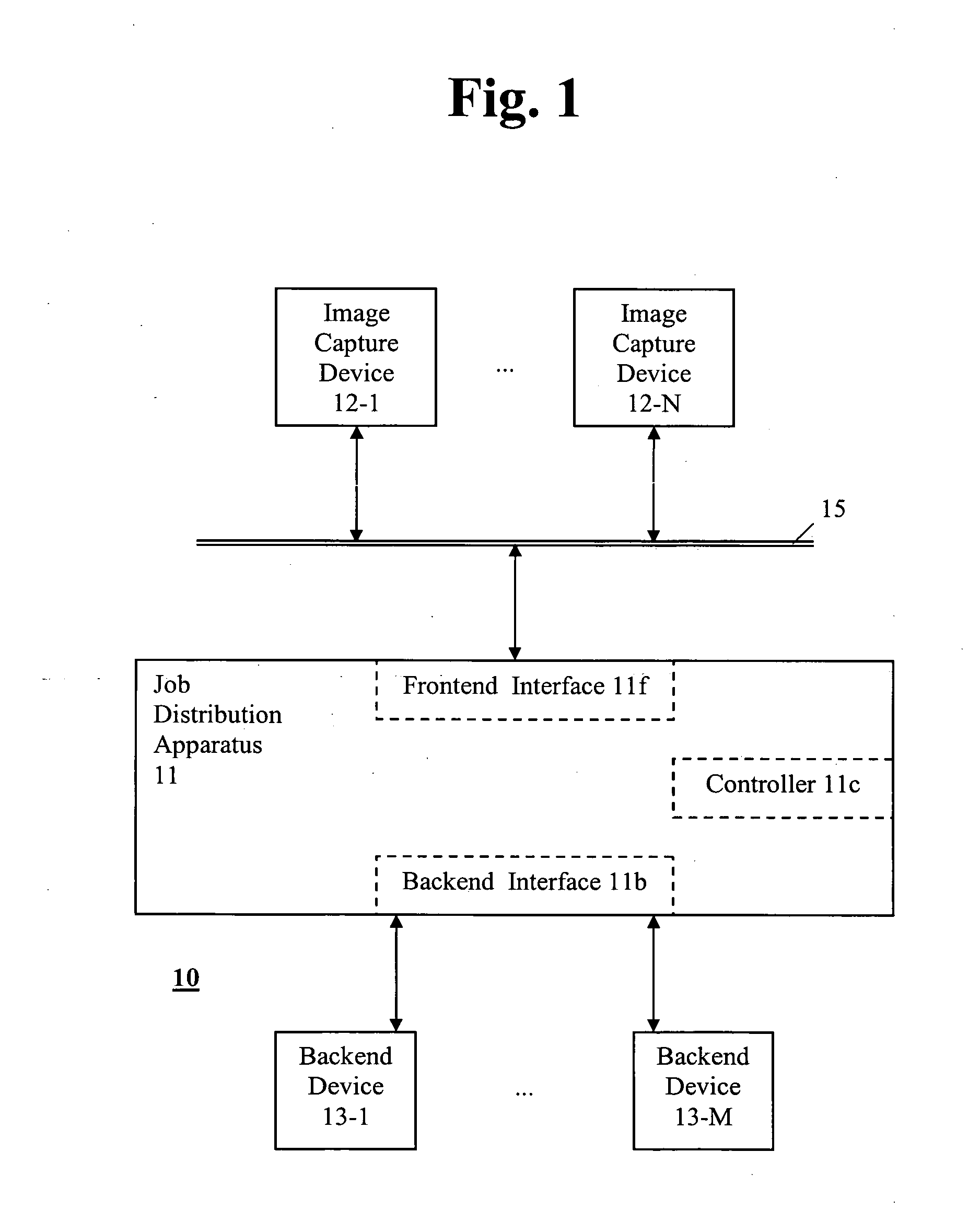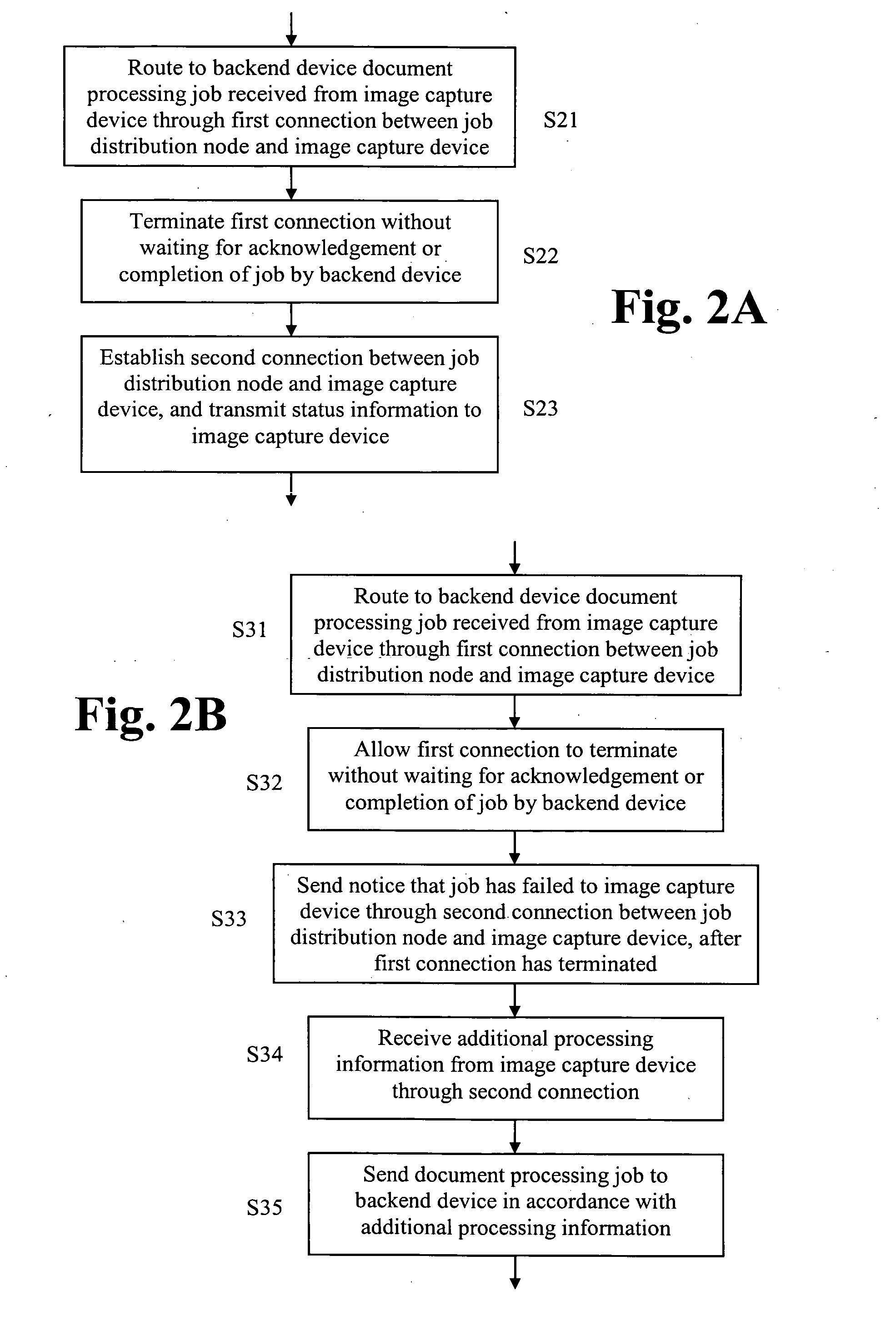Bi-directional status and control between image capture device and backend device
a technology of image capture device and backend device, which is applied in the direction of visual presentation, digital output to print units, data processing applications, etc., can solve the problems of affecting the efficiency of data communication network, and only serving a small number of image capture devices. , to achieve the effect of high scalable and document processing system, not hampered by the burden of maintaining connection
- Summary
- Abstract
- Description
- Claims
- Application Information
AI Technical Summary
Benefits of technology
Problems solved by technology
Method used
Image
Examples
Embodiment Construction
[0029] In describing preferred embodiments illustrated in the drawings, specific terminology is employed for the sake of clarity. However, this disclosure is not intended to be limited to the specific terminology so selected and it is to be understood that each specific element includes all technical equivalents that operate in a similar manner.
[0030] Referring now to the drawings, wherein like reference numerals designate identical or corresponding parts throughout the several views, FIG. 1 shows a block diagram of a document processing system 10 according to an exemplary embodiment of the present disclosure. The system 10 includes a job distribution apparatus 11, (one or more) image capture devices 12-1 to 12-N, and backend devices 13-1 to 13-M.
[0031] A data communication network 15 connects one or more of the image capture devices 12-1 to 12-N to the job distribution apparatus 11. The network 15 can be a local area network, a wide area network or any type of network such as an ...
PUM
 Login to View More
Login to View More Abstract
Description
Claims
Application Information
 Login to View More
Login to View More - R&D
- Intellectual Property
- Life Sciences
- Materials
- Tech Scout
- Unparalleled Data Quality
- Higher Quality Content
- 60% Fewer Hallucinations
Browse by: Latest US Patents, China's latest patents, Technical Efficacy Thesaurus, Application Domain, Technology Topic, Popular Technical Reports.
© 2025 PatSnap. All rights reserved.Legal|Privacy policy|Modern Slavery Act Transparency Statement|Sitemap|About US| Contact US: help@patsnap.com



